Murky urine. Cloudy Urine: Causes, Symptoms, and Treatment Options for Men and Women
What causes cloudy urine in women and men. How can you distinguish between harmless and serious causes of murky urine. When should you see a doctor for cloudy urine. What treatments are available for various conditions causing cloudy urine.
Understanding Cloudy Urine: What It Means and Why It Happens
Cloudy urine, also known as turbid urine, is a common occurrence that can affect both men and women. It refers to urine that appears milky, foamy, or lacks its typical clear, yellowish color. While occasionally experiencing cloudy urine may not be cause for alarm, persistent cloudiness can indicate underlying health issues that require medical attention.
The appearance of urine can provide valuable insights into a person’s overall health. Normally, urine is clear to pale yellow due to the presence of urochrome, a pigment produced during the breakdown of hemoglobin. When urine becomes cloudy, it often signifies an increase in substances such as proteins, crystals, blood cells, or bacteria in the urinary tract.

Common Causes of Cloudy Urine
- Dehydration
- Urinary tract infections (UTIs)
- Kidney stones
- Sexually transmitted infections (STIs)
- Prostate problems
- Retrograde ejaculation
- Certain medications
- Diet and lifestyle factors
Understanding the underlying cause of cloudy urine is crucial for proper diagnosis and treatment. In many cases, simple lifestyle changes or medical interventions can resolve the issue and prevent complications.
Dehydration: A Common Culprit Behind Cloudy Urine
One of the most frequent causes of cloudy urine is dehydration. When the body lacks sufficient fluids, urine becomes more concentrated, leading to a cloudy or murky appearance. This condition is particularly risky for young children and older adults, who are more susceptible to dehydration.
Dehydration can occur due to various factors, including:
- Inadequate fluid intake
- Excessive sweating during hot weather or intense physical activity
- Vomiting or diarrhea
- Fever
- Certain medical conditions or medications
How can you recognize dehydration-induced cloudy urine? In addition to the murky appearance, you may notice:
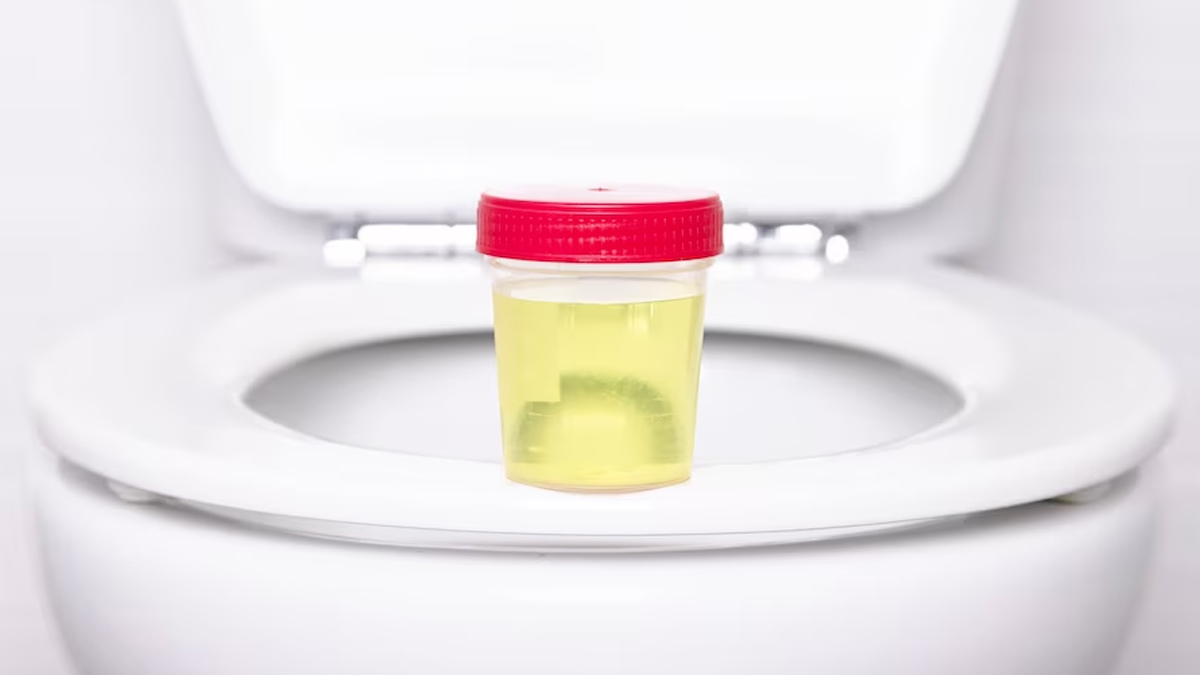
- Darker color urine
- Decreased frequency of urination
- Fatigue
- Increased thirst
- Confusion or disorientation
- Dizziness or lightheadedness
Is dehydration-induced cloudy urine serious? While mild to moderate dehydration can often be treated by increasing fluid intake, severe dehydration requires immediate medical attention. If you experience symptoms such as persistent diarrhea, disorientation, vomiting, or bloody stools, seek medical help promptly.
Urinary Tract Infections: A Leading Cause of Cloudy Urine
Urinary tract infections (UTIs) are among the most common reasons for cloudy urine, particularly in women. These infections occur when bacteria enter and multiply in the urinary system, which includes the bladder, kidneys, ureters, and urethra.
What are the symptoms of a UTI besides cloudy urine? Individuals with UTIs may experience:
- A burning sensation or pain during urination
- Frequent urge to urinate
- Passing small amounts of urine
- Lower abdominal pain or discomfort
- Urine with a strong, unpleasant odor
- Blood in the urine (hematuria)
How are UTIs diagnosed and treated? Diagnosis typically involves a urine sample analysis to detect the presence of bacteria and white blood cells. Treatment usually consists of a course of antibiotics, which can clear up the infection within a few days to a week, depending on its severity.

Can UTIs be prevented? While not all UTIs are preventable, certain measures can reduce the risk:
- Drinking plenty of water
- Urinating frequently and after sexual intercourse
- Wiping from front to back after using the toilet
- Avoiding irritating feminine products
- Taking showers instead of baths
Kidney Stones: When Minerals Crystallize in the Urinary Tract
Kidney stones are another potential cause of cloudy urine. These hard deposits form when minerals and salts crystallize in the kidneys or urinary tract. As they pass through the urinary system, they can cause various symptoms, including changes in urine appearance.
What are the signs that cloudy urine might be due to kidney stones? In addition to murky urine, individuals with kidney stones may experience:
- Severe pain in the side, back, or below the ribs
- Pain that radiates to the lower abdomen and groin
- Pain or burning sensation during urination
- Pink, red, or brown urine (due to blood)
- Nausea and vomiting
- Frequent urination
- Urinating small amounts
How are kidney stones diagnosed and treated? Diagnosis often involves imaging tests such as CT scans or ultrasounds. Treatment depends on the size and location of the stone. Small stones may pass on their own with increased fluid intake and pain medication, while larger stones might require medical intervention such as shock wave lithotripsy or surgical removal.

Can kidney stones be prevented? While not all kidney stones are preventable, certain lifestyle changes can reduce the risk:
- Staying well-hydrated
- Limiting sodium and animal protein intake
- Maintaining a balanced diet rich in fruits and vegetables
- Avoiding excessive calcium supplements
- Treating underlying medical conditions that increase stone risk
Sexually Transmitted Infections: Hidden Culprits of Cloudy Urine
Certain sexually transmitted infections (STIs) can cause cloudy urine as one of their symptoms. Common STIs that may lead to changes in urine appearance include chlamydia, gonorrhea, and trichomoniasis.
What other symptoms might accompany cloudy urine caused by STIs? Depending on the specific infection, individuals may experience:
- Burning or pain during urination
- Discharge from the penis or vagina
- Itching or irritation in the genital area
- Pain during sexual intercourse
- Lower abdominal pain
- Fever or chills
How are STIs diagnosed and treated? Diagnosis typically involves physical examination, urine tests, or swab samples. Treatment varies depending on the specific infection but often includes antibiotics or antiviral medications.

Can STIs be prevented? Practicing safe sex is crucial in preventing STIs. This includes:
- Using condoms consistently and correctly
- Getting regular STI screenings
- Limiting sexual partners
- Discussing sexual health with partners
- Avoiding sexual activity if you suspect an infection
Prostate Problems: A Male-Specific Cause of Cloudy Urine
For men, prostate issues can be a significant cause of cloudy urine. The prostate gland, located just below the bladder, can affect urine flow and composition when it becomes enlarged or inflamed.
What prostate conditions can lead to cloudy urine? Several prostate-related issues may cause changes in urine appearance:
- Benign Prostatic Hyperplasia (BPH): An enlarged prostate that can obstruct urine flow
- Prostatitis: Inflammation of the prostate gland
- Prostate cancer: In rare cases, prostate cancer may cause cloudy urine
What other symptoms might accompany prostate-related cloudy urine? Men with prostate issues may experience:

- Difficulty starting urination
- Weak urine stream
- Frequent urination, especially at night
- Inability to empty the bladder completely
- Pain or discomfort in the lower abdomen or groin
- Pain during ejaculation
How are prostate problems diagnosed and treated? Diagnosis often involves a combination of physical examination, blood tests, and imaging studies. Treatment depends on the specific condition and may include medications, lifestyle changes, or in some cases, surgical intervention.
Retrograde Ejaculation: An Unusual Cause of Cloudy Urine in Men
Retrograde ejaculation is a condition where semen enters the bladder instead of exiting through the penis during ejaculation. This can result in cloudy urine after sexual activity or masturbation.
What causes retrograde ejaculation? Several factors can lead to this condition:
- Nerve damage from surgery or certain medical conditions like diabetes
- Medications that affect bladder neck muscle function
- Prostate or bladder neck surgery
- Spinal cord injuries
How is retrograde ejaculation diagnosed and treated? Diagnosis typically involves examining a urine sample after ejaculation for the presence of sperm. Treatment depends on the underlying cause and may include medications to strengthen the bladder neck muscles or assisted reproductive techniques if fertility is a concern.

When to Seek Medical Attention for Cloudy Urine
While occasional cloudy urine may not be cause for alarm, persistent or recurring cloudiness warrants medical attention. It’s essential to consult a healthcare provider if you experience:
- Cloudy urine lasting more than a few days
- Pain or burning during urination
- Blood in the urine
- Fever or chills
- Lower back pain
- Persistent strong-smelling urine
- Unexplained weight loss or fatigue
What can you expect during a medical evaluation for cloudy urine? Your healthcare provider may:
- Take a detailed medical history
- Perform a physical examination
- Order urine tests to check for infection, protein levels, or other abnormalities
- Recommend blood tests to assess kidney function or check for systemic conditions
- Suggest imaging studies if kidney stones or structural abnormalities are suspected
Early diagnosis and treatment of the underlying cause of cloudy urine can prevent complications and ensure optimal urinary tract health.

Lifestyle Factors and Dietary Influences on Urine Appearance
While medical conditions are often responsible for cloudy urine, certain lifestyle factors and dietary choices can also influence urine appearance. Understanding these factors can help individuals differentiate between harmless temporary changes and potentially serious issues.
What dietary factors can affect urine appearance?
- Eating large amounts of dairy products
- Consuming foods high in phosphorus
- Certain vitamin supplements
- Artificial food colorings
How can lifestyle choices impact urine clarity?
- Dehydration from excessive alcohol consumption
- Intense physical exercise without proper hydration
- Stress and anxiety
- Lack of sleep or disrupted sleep patterns
Can medications cause cloudy urine? Yes, certain medications may alter urine appearance. These include:
- Some antibiotics
- Certain pain relievers
- Diuretics
- Vitamin supplements
Is it possible to prevent cloudy urine through lifestyle changes? While not all causes of cloudy urine are preventable, adopting healthy habits can reduce the risk:

- Staying well-hydrated
- Maintaining a balanced diet
- Practicing good hygiene
- Managing stress through relaxation techniques or exercise
- Getting adequate sleep
- Limiting alcohol consumption
By being aware of these factors, individuals can better understand the potential causes of changes in their urine appearance and make informed decisions about when to seek medical attention.
Advanced Diagnostic Techniques for Persistent Cloudy Urine
When initial tests fail to identify the cause of persistent cloudy urine, healthcare providers may employ more advanced diagnostic techniques. These methods can help detect less common or more complex underlying conditions.
What advanced diagnostic procedures might be used for cloudy urine?
- Cystoscopy: A procedure that allows direct visualization of the bladder and urethra
- Urodynamic studies: Tests that evaluate bladder function and urine flow
- CT urography: A specialized CT scan that provides detailed images of the urinary tract
- MRI of the pelvis: To assess for structural abnormalities or tumors
- Renal biopsy: In cases where kidney disease is suspected
How do these advanced diagnostic techniques work?

Cystoscopy involves inserting a thin, flexible tube with a camera into the urethra to examine the bladder lining. Urodynamic studies measure pressure and flow during urination. CT urography uses contrast dye to highlight the urinary system, while MRI provides detailed soft tissue images. A renal biopsy involves taking a small sample of kidney tissue for microscopic examination.
Are these advanced diagnostic procedures painful? Most of these procedures cause minimal discomfort. Local anesthesia or sedation may be used to ensure patient comfort. Your healthcare provider will discuss the specifics of each procedure and any potential risks or side effects.
When might a healthcare provider recommend these advanced tests? Advanced diagnostic procedures are typically considered when:
- Initial tests are inconclusive
- Symptoms persist despite treatment
- There’s suspicion of a more serious underlying condition
- The patient has risk factors for urological cancers or other complex conditions
By utilizing these advanced diagnostic techniques, healthcare providers can gain a more comprehensive understanding of the urinary system’s health and function, leading to more accurate diagnoses and targeted treatment plans for persistent cloudy urine.

What Causes Cloudy Urine in Women and Men?
Cloudy urine can be caused by many different medical conditions, ranging from relatively benign to severe. These conditions can include dehydration, a urinary tract infection, sexually transmitted infections, kidney stones, diabetes, and others.
Sometimes cloudy urine indicates an increase in protein, crystalline substances, blood, pus, or other chemicals in your urine. Medical professionals use other language to describe cloudy urine. They might use words like milky, foamy, turbid white urine, or the term albinuria. (1)
Dehydration — Especially Risky in the Young and Elderly
Many people know that darker-colored urine is a sign of dehydration, but cloudy urine can also indicate that you’re not getting enough water.
It’s particularly risky for young children and older adults to become dehydrated. You’re also at increased risk for dehydration during hot weather or if you’ve been exercising strenuously, vomiting, experiencing diarrhea, or have had a fever. (2)
(2)
In addition to cloudy urine, these signs can accompany dehydration:
- Dark urine
- Less-frequent urination
- Fatigue
- Feeling very thirsty
- Confusion
- Dizziness or lightheadedness
If you start to experience diarrhea, disorientation, vomiting, or bloody or black stool, seek medical attention immediately for dehydration.
Mild to moderate dehydration is treated by drinking more fluids like water. But severe dehydration may require treatment in which intravenous (IV) fluids are administered at a doctor’s office or emergency room in addition to oral rehydration.
The Latest in Urine
7 Home Remedies for Urinary Tract Infection (UTI) Symptoms
Home remedies for urinary tract infection, or UTI, like drinking more water, may help bring relief to symptoms. Learn about more UTI remedies and how …
By Lindsey Konkel
Frequent Urination: Symptoms, Causes and Treatment
Frequent urination can result from drinking too many fluids or can be caused by a UTI or disease affecting parts of the urinary tract, including the kidneys. ..
..
By Kathleen Smith, PhD, LPC
What Does Burning or Painful Urination (Dysuria) Mean?
Pain or discomfort during urination (dysuria) may feel like burning, stinging, or itching and is often caused by a bacterial infection or inflammation…
By Kathleen Smith, PhD, LPC
Ketones in Urine: When and Why to Test for Them and What They Mean
Testing for ketones in urine is important in people with diabetes. Too much of the acid, created when the body burns fat for fuel, can lead to a serious…
By Kathleen Smith, PhD, LPC
Urinalysis: Purposes, Types, Results
In a urinalysis, a clean urine sample is collected in a specimen cup and examined visually, microscopically, and with a dipstick test to diagnose and …
By Kathleen Smith, PhD, LPC
Protein in Urine (Proteinuria): Causes, Symptoms, Treatment
It’s normal for urine to have a little protein, but high levels of protein in urine, or proteinuria, can mean your kidneys aren’t properly filtering waste. ..
..
By Kathleen Smith, PhD, LPC
What Causes Blood in Urine (Hematuria)?
Blood in urine, or hematuria, isn’t always serious but can be a sign of a number of health conditions, including those affecting the kidneys, bladder,…
By Kathleen Smith, PhD, LPC
What Your Urine Says About You and Your Health
The color, odor, density, and frequency of your urine can tell you a lot about your health, as can the presence of proteins and ketones. Changes in urine…
By Kathleen Smith, PhD, LPC
How Does Your Urine Change When You’re Pregnant?
Being pregnant can change your urine. Here’s what’s normal and when your urine change may be a sign of trouble.
By Kathleen Smith, PhD, LPC
10 Medications That May Cause Increased Urination
There are several potential causes of frequent urination, and the meds you’re taking could be one of the culprits. Here is a list of medications that …
Here is a list of medications that …
By Jessica Migala
7 Common Causes of Cloudy Urine
Written by Stephanie Watson
Medically Reviewed by Murtaza Cassoobhoy, MD on May 28, 2023
- Urinary Tract Infection
- Dehydration
- Kidney Stones
- Sexually Transmitted Infection (STI)
- Retrograde Ejaculation
- Blood in the Urine
- Prostate Problems
- More
If you notice that your urine looks cloudy instead of its usual clear, yellowish color, it could be due to infections, kidney stones, or other changes in your health. Sometimes pain or other symptoms go along with it. The sooner you learn the cause, the quicker you can get the treatment you need.
A urinary tract infection (UTI) happens when bacteria get into your bladder, kidneys, or urethra. That’s where urine comes out. Along with cloudy urine, you’ll notice symptoms like:
- Burning or pain when you pee
- A need to go more often than usual
- Leaking urine
- Smelly or bloody urine
- Pain in your lower belly
Your doctor will likely suggest antibiotics to clear up the infection. Finish all the pills that they prescribe to make sure all the bacteria get killed.
Finish all the pills that they prescribe to make sure all the bacteria get killed.
Call your doctor if you:
- Get a fever higher than 100.5 F
- Have chills
- Feel pain in your lower belly or flank
- Are nauseated or throwing up
Your urine can turn cloudy when you don’t drink enough. A lack of fluid makes urine more concentrated. It will also turn a darker color.
You can solve this problem by drinking more water every day. When you get enough fluids, your urine will be clear and light yellow in color.
Call your doctor if you:
- Feel dizzy or faint
- Get confused
- Have a fast heartbeat
- Are breathing hard
Kidney stones are crystals that form in your kidneys out of minerals and salts in your urine. Large stones can make urine back up in your bladder or another part of your urinary tract. They can cause pain, sometimes severe. You might hurt on your side and lower back, or when you pee.
Your urine could get cloudy or have blood in it. It could also be smelly or look red, pink, or brown.
It could also be smelly or look red, pink, or brown.
Some other symptoms you might have are:
- Fever and chills
- Nausea and vomiting
Some kidney stones come out on their own in your urine. Doctors can do a noninvasive procedure to break up stones that are too big to pass through urine. Sometimes, people need surgery to remove stones.
Call your doctor if you:
- Have severe pain in your back or side
- Feel nauseated or throw up
- Have to go all the time
- Have a burning sensation when you pee
- Notice urine that is pink or red
STIs are viral or bacterial infections you catch from a partner during sex. Infections like chlamydia and gonorrhea cause a milky discharge from the penis or vagina that can turn the urine cloudy.
Other signs that you have an STI are:
- Green, yellow, or bloody discharge from the penis or vagina
- Pain or burning when you pee or have sex
- Itching around the penis or vagina
Call your doctor if you have symptoms of an STI. Antibiotics can cure infections caused by bacteria. If a virus caused your STI, medicines can treat the symptoms.
Antibiotics can cure infections caused by bacteria. If a virus caused your STI, medicines can treat the symptoms.
Normally when a man has an orgasm, semen travels out of their body through their penis. In retrograde ejaculation, semen backs up into the bladder. This causes a dry orgasm without any fluid. The urine is cloudy right after an orgasm because it contains semen.
Retrograde ejaculation happens when the muscle at the opening of the bladder doesn’t close tightly enough. Nerve problems from diabetes, multiple sclerosis (MS), or medicines are possible causes.
You may not need treatment for this condition unless you want to start a family and you can’t get your partner pregnant. Your doctor can suggest medicines to keep your bladder closed during sex.
Call your doctor if little or no semen comes out when you have an orgasm and you want to have a child.
Cloudiness is sometimes due to blood in the urine. Blood can stain the yellow urine red, pink, or brown.
Blood in your urine could mean you have a UTI, kidney stones, or an enlarged prostate. Rarely, it can be a sign of cancer in your urinary tract. See your doctor to get this symptom checked out.
Call your doctor if your urine looks red or pink, especially if you also have pain, fever, or other symptoms.
The prostate gland adds fluid to sperm in men. This gland wraps around the urethra, the tube that urine travels through as it moves out of the body.
Any swelling of the prostate can block the flow of urine. Blood or debris can then build up in the trapped urine and turn it cloudy.
When urine is cloudy due to prostate problems, you might also have symptoms like:
- Pain or burning when you pee
- Dribbling or trouble starting to urinate
- An urgent need to go, or frequent urination
- Blood in the urine
- Pain when you ejaculate
- Fever and chills
Your treatment depends on what’s causing the problem. You may get medicines to treat an infection or to shrink your swollen prostate.
Call your doctor if:
- You have to pee all the time
- You get up during the night to pee
- When you pee, urine dribbles out
- You see blood in your pee or semen
- It hurts when you pee or have an orgasm
- You have pain in your lower back, hips, groin, or upper thighs
Top Picks
Cloudy urine: causes and treatments
Contents
- 1 Cloudy urine: causes and how to deal with the problem
- 1.
 1 Cloudy urine: concept and cause
1 Cloudy urine: concept and cause - 1.2 Why does cloudy urine occur?
- 1.3 Cloudy urine problems
- 1.4 Diagnosis of cloudy urine
- 1.5 Treatment of cloudy urine
- 1.6 Medicines for cloudy urine
- 1.7 Folk treatments cloudy urine
- 1.8 Diet in the treatment of cloudy urine
- 1.8.1 Basic principles of nutrition
- 1.8.2 What can you eat?
- 1.8.3 Drinking regimen
- 1.8.4 What should be avoided?
- 1.9 Preventing cloudy urine
- 1.10 When should you seek medical attention for cloudy urine?
- 1.10.1 Call your doctor immediately if:
- cause cloudy urine?
- 1.12.0.2 What symptoms may accompany cloudy urine?
- 1.12.0.3 What are the treatments for cloudy urine?
- 1.12.0.4 How to prevent cloudy urine?
- 1.12.0.5 Can home remedies help cloudy urine?
- 1.12.0.6 Can cloudy urine be a health hazard?
- 1.
Turbid urine is a symptom of a malfunction in the urogenital system of the body. The article will talk about the causes of cloudy urine and the need to see a doctor to identify possible diseases.
The article will talk about the causes of cloudy urine and the need to see a doctor to identify possible diseases.
One of the most common symptoms of diseases of the urinary system is a change in the color of the urine. Kidney, bladder, or urethral problems often show up as cloudy urine, which can be a sign of a serious problem.
Cloudy urine is due to the accumulation of various elements such as protein compounds, mineral crystals, cells or bacteria. Some diseases of the urinary system, such as infections or kidney stones, can cause cloudy urine, as well as other symptoms such as pain, burning, or painful urination.
However, cloudy urine may also be due to other factors, such as changes in diet, use of certain medications, or increased alcohol consumption. To find out the cause of turbidity of urine, it is necessary to diagnose and consult a specialist in time.
Cloudy urine: concept and cause
Cloudy urine is a change in the normal color of the urine, which becomes cloudy, singing and visible as a solid particle. This may indicate various health problems such as a urinary tract infection, kidney or bladder disease that require medical attention. In addition, it may be due to lifestyle changes such as diet or fluid intake.
This may indicate various health problems such as a urinary tract infection, kidney or bladder disease that require medical attention. In addition, it may be due to lifestyle changes such as diet or fluid intake.
In addition, cloudy urine may be associated with a specific lifestyle. For example, high protein intake or lack of fluids can cause phosphate deposits to form in the urine, which also causes it to become cloudy. People who play active sports or work in hot weather may also experience changes in their urine. The rough work of the kidneys, associated with an excessive load on the kidneys, leads to a disruption in the process of actual filtration of urine, which causes blockage and turbidity.
Why does urine become cloudy?
Cloudy urine can be caused by a variety of reasons, ranging from a simple lack of fluid in the body to serious diseases of the kidneys and urinary tract.
One of the main causes of cloudy urine is a metabolic disorder in the body.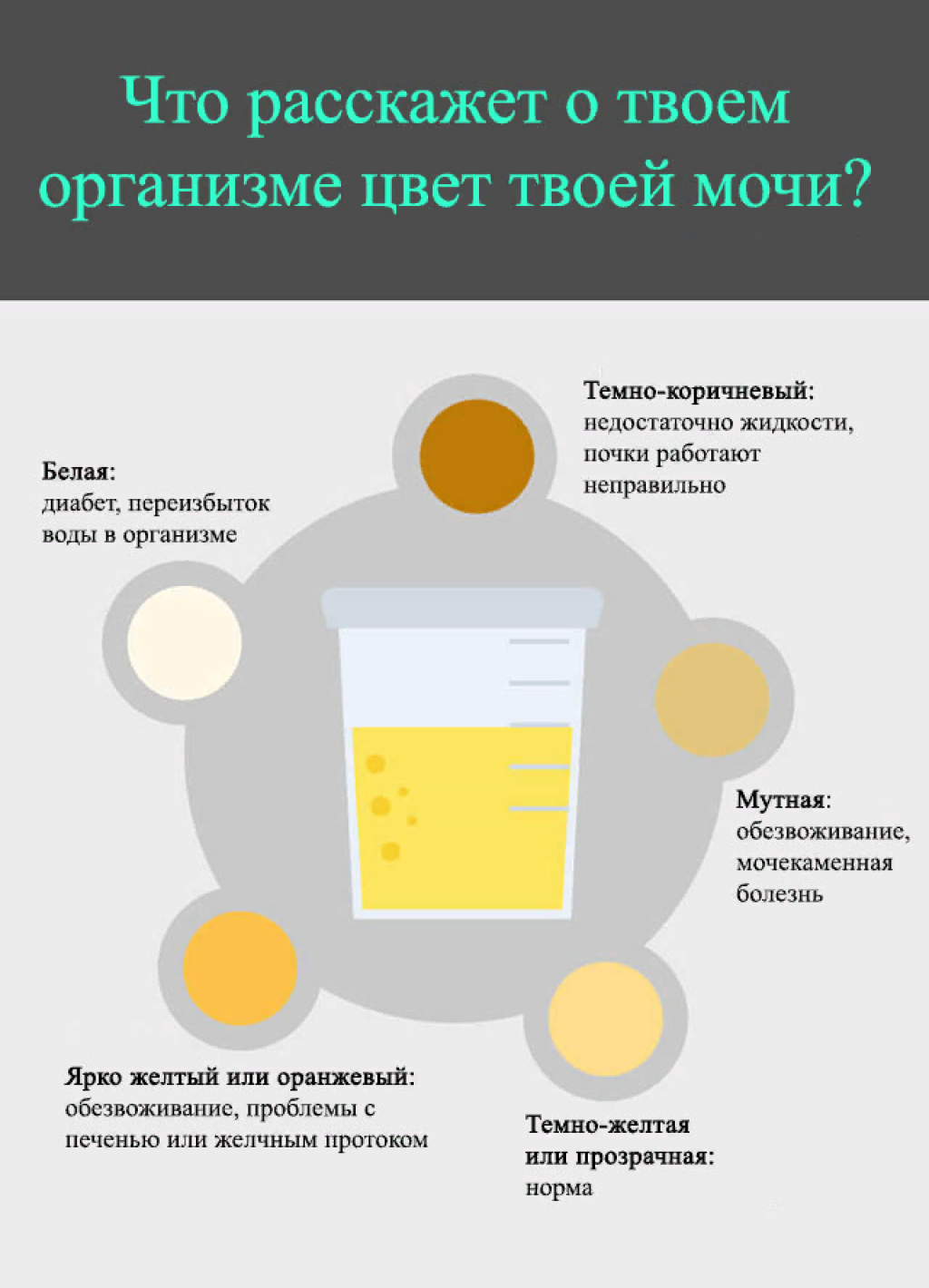 This may be due to an unbalanced diet, intense physical exertion, thyroid dysfunction, and other causes.
This may be due to an unbalanced diet, intense physical exertion, thyroid dysfunction, and other causes.
Diseases of the urinary system can also cause cloudy urine. These can be diseases such as cystitis, pyelonephritis, glomerulonephritis and others. In these cases, the urine becomes not only cloudy, but may contain blood, protein, and other impurities.
In some cases, cloudy urine may be associated with exhaustion of the body or malfunction of organs. For example, if you have diabetes, your urine may become cloudy due to high blood sugar levels.
- It is important to understand that cloudy urine is not normal and needs attention from a doctor.
- Finding out the cause of cloudy urine is important for the correct treatment of the disease and the preservation of health.
Cloudy urine problems
Cloudy urine can be a sign of a number of urinary problems. It may indicate the presence of proteins, red blood cells, and other substances that are not normally excreted in a healthy body.
One of the main problems associated with cloudy urine is an increased risk of urinary tract infections. Patients who experience this phenomenon often experience discomfort during urination, feel pain and may observe changes in the color of urine.
Cloudy urine can also be a symptom of chronic kidney failure. This condition of the body is characterized by the fact that the work of the kidneys deteriorates over time, which can lead to dangerous complications.
Many of the problems associated with cloudy urine may not appear immediately. Therefore, in case of repeated cases of observed changes in the color of urine, a specialist should be consulted to identify the cause and prescribe the necessary treatment.
Diagnosis of cloudy urine
In case of changes in the color and transparency of urine, it is necessary to consult a urologist or general practitioner. To diagnose turbidity of urine, a general urine test is performed, which allows you to determine the presence of pathological processes in the urinary system.
It is important to note that turbidity of urine can be a symptom not only of urological diseases, but also of other pathological conditions, such as liver disease, diabetes mellitus, urinary tract infections, and others. Therefore, the doctor conducts extensive diagnostics to determine the source of the problem and prescribe the appropriate treatment.
Treatment of cloudy urine
Cloudy urine can be a sign of various diseases of the urinary system. Treatment depends on the cause , therefore, a consultation with a urologist is necessary to make an accurate diagnosis and select an individual treatment regimen.
One of the first steps in treating cloudy urine is to drink enough water to dilute the urine and pass it out more easily.
If you have a urinary tract infection antibiotics are prescribed to help eliminate the pathogen and improve the functioning of the urinary system.
- In cases where turbidity is due to urolithiasis , treatment is aimed at reducing the size of the stones by taking diuretics and a special diet.

- Kidney disease that can lead to cloudy urine is treated with medications that help protect kidney tissue, restore function, and prevent swelling.
The use of folk remedies and especially self-treatment in case of cloudy urine is not recommended , as incorrect methods of treatment can aggravate the situation and lead to complications. It is necessary to consult a doctor and strictly follow his recommendations.
Medicines for cloudy urine
Cloudy urine can be a sign of various diseases and conditions in the body. Treatment should be aimed at eliminating the underlying cause. One of the methods of treatment is taking medications.
In advanced or chronic urinary tract infections, medications may be used to relieve symptoms. An example of such a drug is drotaverine, which relieves spasms of the smooth muscles of the urinary tract.
Swelling and imbalance of body fluids can lead to cloudy urine.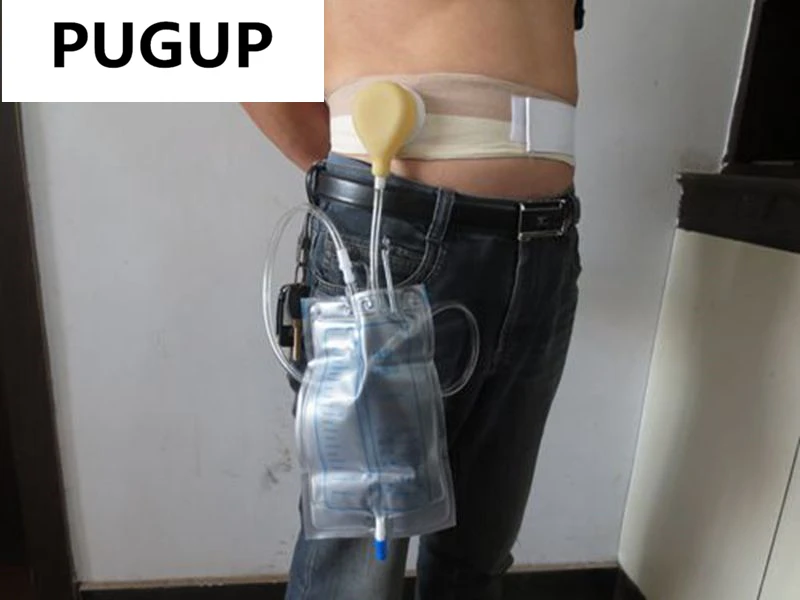 In this case, diuretics are prescribed, for example, furosemide. They increase the excretion of fluid and reduce swelling.
In this case, diuretics are prescribed, for example, furosemide. They increase the excretion of fluid and reduce swelling.
In each case, the treatment of cloudy urine should be carried out under the supervision of a physician, after diagnosis and identification of the cause of this phenomenon. Self-medication can lead to worsening of the condition and the development of complications.
Folk remedies for cloudy urine
There are many folk remedies for cloudy urine that can help resolve this problem without medication. One of the most common ways is to drink plenty of water. To get rid of the accumulation of toxins and improve kidney function, you should drink at least two liters of water a day.
In addition, drinking cranberry juice helps. It has diuretic properties and can improve the condition of the urinary tract. Also useful is the use of decoctions of herbs, such as St. John’s wort, nettle, birch buds. These herbs have diuretic and anti-inflammatory properties.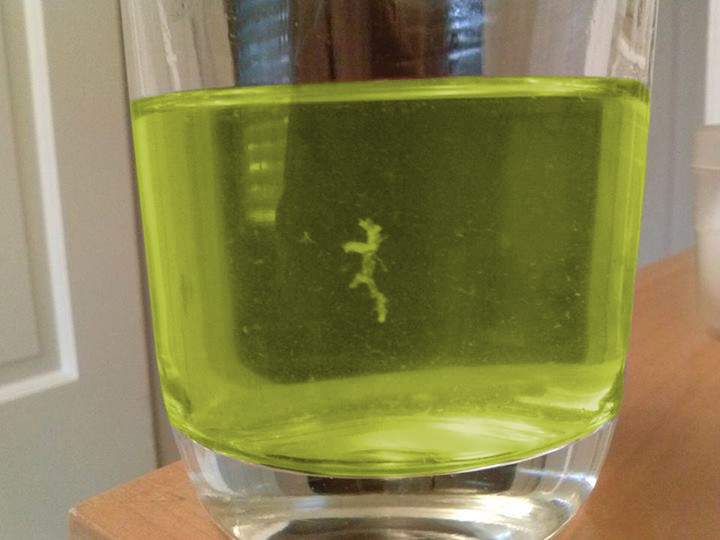
- Another folk remedy is the use of thermal procedures: a heating pad for the kidneys, mud wraps, etc. These procedures help improve blood circulation and speed up the elimination of toxins from the body.
- Some patients use honey products to treat cloudy urine. Honey, aloe juice, propolis – all this has anti-inflammatory properties and helps to eliminate toxins and microbes from the body.
- But it is worth remembering that folk methods of treating cloudy urine can be ineffective or even harmful and contraindicated in some cases. Therefore, before using any traditional medicines, it is best to consult a doctor.
Diet in the treatment of cloudy urine
Basic principles of nutrition
In the treatment of cloudy urine, it is necessary to monitor the quality and quantity of foods consumed. Try to exclude fatty and fried foods, salty and smoked foods, sweets and confectionery from the diet. The diet should be regular, in small portions throughout the day.
What can you eat?
When treating cloudy urine, foods rich in vitamins and minerals should be consumed. It is recommended to increase the intake of vegetables and fruits, whole grains, lean fish and meat, and low-fat dairy products. It is also useful to consume green tea, watermelon, cranberries and other foods that help cleanse the kidneys and genitourinary system.
Drinking regimen
Regular drinking of water is one of the important aspects in the treatment of cloudy urine. Try to consume at least 1.5-2 liters of fluid throughout the day. Preference should be given to non-carbonated water, green tea, freshly squeezed juices from vegetables and fruits.
What should be excluded?
To avoid aggravation of the situation in the treatment of cloudy urine, coffee, black tea, alcoholic beverages, carbonated drinks, fast food and other foods that can adversely affect the functioning of the kidneys and genitourinary system should be excluded from the diet.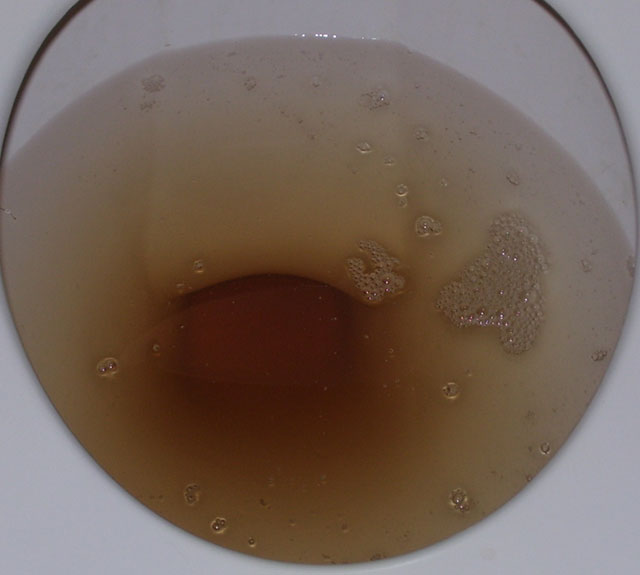
Prevention of cloudy urine
Cloudy urine can be caused by various reasons, so it is important to take care of your health and take preventive measures to prevent its occurrence.
- Drink enough water regularly to ensure proper hydration levels;
- Avoid overeating, as overeating can lead to an increase in protein in the urine, which can cause it to become cloudy;
- Avoid alcohol and other harsh substances that can damage the kidneys and impair urine quality;
- Maintain a healthy lifestyle, including regular exercise and a balanced diet, to strengthen the immune system and reduce the chance of urinary tract infections;
- Maintain genital hygiene to avoid infections and other possible problems;
- Visit a doctor for regular check-ups and at the first sign of cloudy urine, a specialist should be consulted to identify and eliminate the causes of this condition.
It is important to understand that preventive measures are necessary to maintain the health of the urinary tract, including the prevention of cloudy urine.
When should you seek medical attention for cloudy urine?
Seek immediate medical attention if:
- Cloudy urine accompanied by pain in the lower back, abdomen or urination;
- There are blood, mucus, foam in the urine;
- Feel painful, careful or frequent urination;
- In addition to cloudy urine, you have kidney dysfunction (increased urine volume, loss of appetite, swelling).
See a urologist if:
- Your urine is cloudy all the time and no home remedies are working;
- You are currently being treated for a urinary tract infection;
- you have a history of urinary or hereditary kidney disease;
- You are taking medicines that affect kidney function.
If turbidity is not accompanied by any symptoms, but is simply present, general guidelines should be followed in observing what changes will occur during the next few big days. If cloudiness does not go away, if there is pain in the lower back or in animals, or if other symptoms occur, a doctor should be consulted to assess the condition and determine the need for treatment.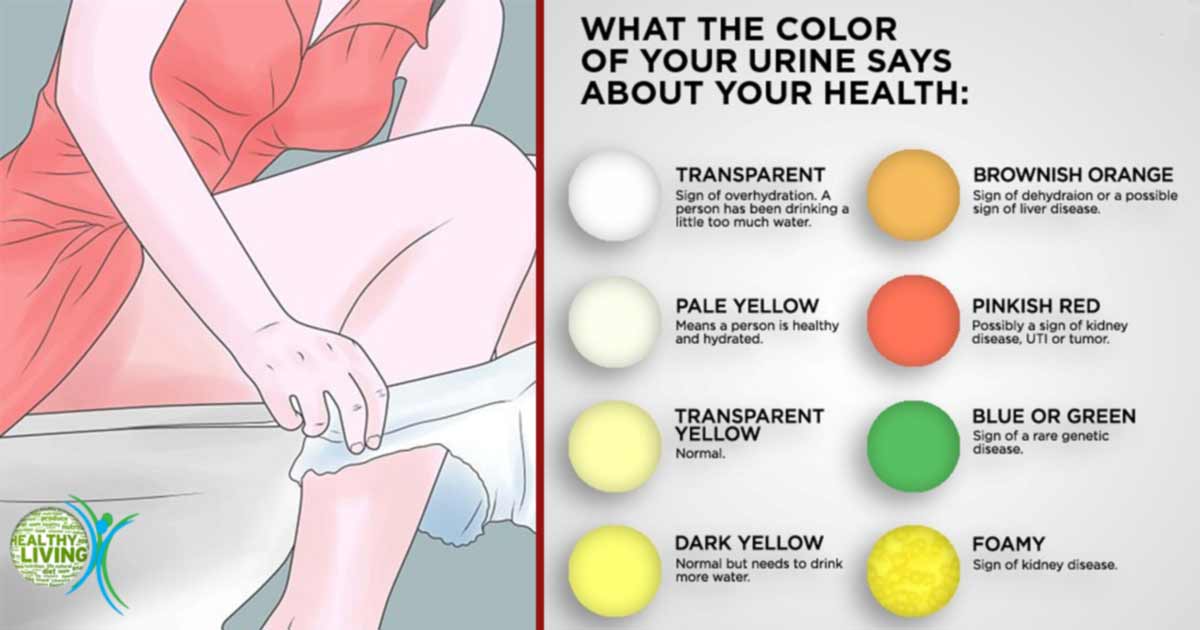
Related videos:
Q&A:
What can cause cloudy urine?
Cloudy urine can result from many factors, including urinary tract infections, kidney stones, prostatitis, bladder cancer, gynecological disorders, and excessive intake of protein, salt, and other substances that can affect urine color.
What symptoms can accompany cloudy urine?
In addition to being cloudy, urine may change color, become reddish, smell strongly, cause pain or discomfort when urinating, discharge from the urinary canal, etc.
What are the treatments for cloudy urine?
Treatment for cloudy urine depends on the specific cause. Antibiotics are often used to fight infections, remove kidney and bladder stones, and undergo surgery for bladder cancer or other tumors. It is also important to control the nutrition and water balance of the body.
How to prevent cloudy urine?
To prevent cloudy urine, it is important to monitor your health and have regular medical check-ups, control fluid intake, and avoid excess protein, salt, and other substances that can affect the color of your urine.
Can home remedies help cloudy urine?
Home methods may help in some cases, such as drinking large amounts of fluid to dilute urine, applying warm compresses to relieve pain, and caring for the genitals to prevent infections. However, it is important to remember that in some cases, such as bladder cancer, home remedies will not work and medical attention should be sought.
Can cloudy urine be a health hazard?
Cloudy urine can be due to serious conditions such as bladder cancer, so it is important to seek medical attention if it persists for a long time or is accompanied by other unusual symptoms. If not treated promptly, cloudy urine can cause further complications and threaten health.
Changes in urine – norm, causes, diagnosis, treatment
How urine is formed
Urine is formed in the process of filtering blood by the kidneys. Passing through the kidneys, the blood is cleared of unnecessary substances. Its main volume is sent back to the bloodstream, and a small amount of fluid is excreted from the body in the form of urine.
Passing through the kidneys, the blood is cleared of unnecessary substances. Its main volume is sent back to the bloodstream, and a small amount of fluid is excreted from the body in the form of urine.
Each kidney consists of several segments – nephrons. There are glomeruli and tubules in the nephron
Blood is filtered in the glomeruli of the kidney. The resulting liquid is called primary urine
In the tubules of the kidney, primary urine is filtered again, and part of the liquid is again sent to the bloodstream (this process is called reabsorption)
Urine consists of 95% water and 5% of impurities: electrolytes, breakdown products of cell components .
If a person becomes ill, the composition of the urine changes. For example, with inflammatory kidney disease, urine may become cloudy or change color. And in diabetes mellitus, the volume of excreted fluid increases significantly.
Main characteristics of urine
Changes in urine can indicate a variety of pathologies: kidney disease, infectious processes, endocrine disorders.
You can notice some violations yourself. For example, that there is less urge to go to the toilet and less urine, or that the liquid has changed color or smell. Others can only be identified in the course of laboratory tests.
Urinalysis
Urine 24 1 day
24 bonuses
240 ₽
Add to cart
1 day
Urine 0 ₽
Urinalysis according to Nechiporenko
Urine 25 1 day
25 bonuses
250 ₽
Add to cart
1 day
Urine 0 ₽
Urinalysis according to Zimnitsky
Urine 43 1 day
43 bonuses
430 ₽
Add to cart
1 day
Urine 0 ₽
Urine culture for microflora
Urine 67 1 day
67 bonuses
670 ₽
Add to cart
1 day
Urine 0 ₽
Analysis of mineral metabolism (23 elements) (urine)
Urine 320 5 days
320 bonuses
3 200 ₽
Add to cart
5 days
Urine 0 ₽
There are a number of urine characteristics that are used to evaluate the urinary, endocrine and other systems.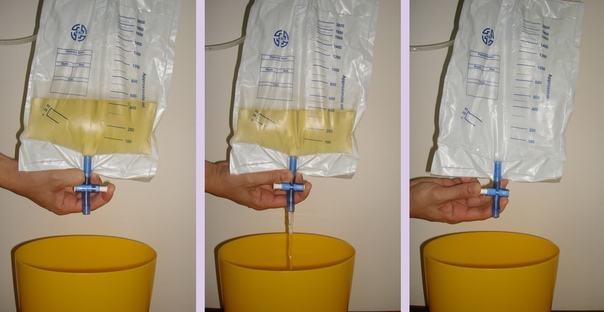 Changes can be qualitative or quantitative. Among the qualitative ones are such indicators as color, transparency, foaminess. Among the quantitative ones is the volume of fluid released during the day.
Changes can be qualitative or quantitative. Among the qualitative ones are such indicators as color, transparency, foaminess. Among the quantitative ones is the volume of fluid released during the day.
Quantity
The amount of urine excreted, or diuresis, is determined during a daily analysis: the patient collects urine in a container for 24 hours, and then estimates its approximate volume. The normal amount of urine is from 800 ml to 2 liters. If urine output is less than 500 ml, the diagnosis is oliguria. If more than 2 liters – “polyuria”.
Possible causes of change in urine volume
Oliguria – a decrease in the amount of urine separated – may indicate dehydration (for example, with an increase in body temperature or vomiting), severe blood loss (in case of injury, after surgery, during menstruation).
Polyuria may indicate the development of diabetes or diabetes insipidus, excessive production of the hormone by the parathyroid glands or the adrenal cortex. Also, polyuria may indicate diseases of the urinary system.
Also, polyuria may indicate diseases of the urinary system.
Color
The color of urine is determined by the bile pigment, which is produced in the liver during the breakdown of hemoglobin. Normally, urine should be clear or light yellow.
Possible causes of discoloration of urine
A change in the color of urine does not always indicate pathology. Hue may change due to natural or synthetic dyes present in food, or changes in fluid intake.
The color of urine can determine the general condition of the body and identify some pathologies, including dehydration
Also, the color of urine can be affected by medications taken: depending on the drug, it can become bright yellow, orange, reddish or dark brown.
However, if the color of the urine has changed for no apparent reason, this is a reason to be examined. Hue may change due to kidney disease
(pyelonephritis, urolithiasis, kidney infarction) and liver (hepatitis, cirrhosis, cholelithiasis) or in case of metabolic disorders.
Transparency
Fresh urine should normally be completely clear. Gradually, it may precipitate from salts and mucus.
Possible reasons for the change in transparency
If the urine is cloudy or with a suspension, this may indicate that it contains salts, bacteria, mucus. This composition indicates inflammatory diseases of the urinary system, urolithiasis or metabolic disorders.
Urine may also become cloudy if a person eats a lot of fish and seafood.
Specific gravity (density)
Specific gravity indicates how dense the urine is, i.e. concentrated. The indicator is quite unstable: it changes during the day (urine has the highest density in the morning), depends on the amount of fluid you drink and even on the air temperature outside. However, significant deviations from the norm may indicate the development of pathological processes.
Possible causes of changes in specific gravity
A significant deviation in the density of urine from the norm can develop with metabolic disorders, diseases of the kidneys or bladder, hormonal imbalance, inflammatory diseases. Also, the density can increase with dehydration: diarrhea, vomiting, intense training.
Also, the density can increase with dehydration: diarrhea, vomiting, intense training.
This is one of the indicators that a person can notice even without a laboratory test: the richer the color of the urine, the higher its specific gravity. An increase in the density of urine without an obvious reason (for example, a recent poisoning) is a reason to consult a doctor.
Odor and foaminess
Normally, fresh urine is practically odorless and does not foam.
Possible causes of odor or foam
If the urine has a sharp or specific odor, this may indicate dehydration, diseases of the urinary system (pyelonephritis, cystitis), urogenital infections or serious metabolic disorders.
Foaming is usually caused by protein. It can get into the urine with kidney pathologies.
If the urine foams, see a doctor and get tested
Acidity (pH)
The reaction of urine – more acidic or alkaline – reflects the acid-base balance throughout the body. According to this indicator, a number of violations can be identified and the body’s ability to resist infections can be determined.
According to this indicator, a number of violations can be identified and the body’s ability to resist infections can be determined.
Possible causes of changes in acidity
A change in pH can indicate diseases of the kidneys and bladder, for example, thyroid dysfunction, diabetes, gout. Acidity can change during acute pathological processes: fever, vomiting.
The reaction is also influenced by the characteristics of the diet: if a person eats a lot of meat and protein foods, the environment becomes acidic, if the diet is dominated by vegetables and cereals, it becomes alkaline. When fasting, acidity rises.
Urine PH can be determined independently using test strips
What to do if your urine changes
Deviations from the norm do not always indicate pathological disorders. First of all, when collecting, there is a high probability of error – for example, mucus may appear if it is bad to wash or collect not the middle, but the first portion of urine.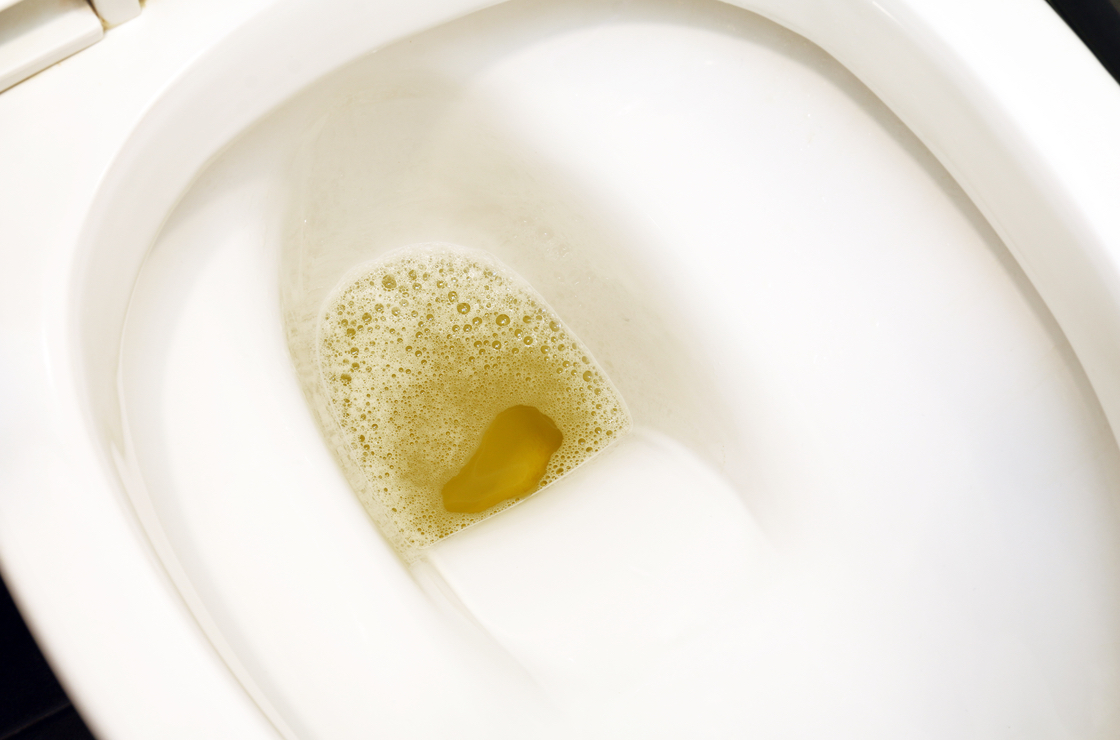 Among other factors that may affect the result: incorrect storage of the material (in a warm place, more than 12 hours), use of a non-sterile container, examination during menstruation.
Among other factors that may affect the result: incorrect storage of the material (in a warm place, more than 12 hours), use of a non-sterile container, examination during menstruation.
If the analysis is not normal, the doctor will most likely ask for a second urine test.
Which doctors to contact if violations are detected
For any abnormalities in the properties or analysis of urine, you need to contact a therapist. He will conduct an initial diagnosis and, if necessary, refer to specialized specialists: a nephrologist, endocrinologist, gynecologist, gastroenterologist.
Treatment
Change in urine may be physiological or indicate diseases that need to be treated. The decision on the need for therapy is made by the doctor. As a rule, a single urine test is not enough to make a diagnosis. Most likely, a number of additional studies will be required to clarify the diagnosis: a blood test, ultrasound of the kidneys, liver, and pelvic organs.

 1 Cloudy urine: concept and cause
1 Cloudy urine: concept and cause